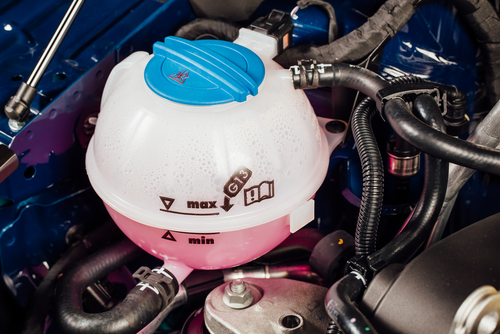Often this system is contained within other driver assistance systems such as the right of way warner, the wrong way assistant or speed limit info. Benefits: For accurate results, the driver assistance system is able to take into account and process various data sources such as recognised road signs, navigation devices and current vehicle data. The Sensor Diagnostic Tool (SDT) is included with the Windows Driver Kit, and you can use this tool to test your driver, firmware, and hardware functionality. Note The Sensor Diagnostic Tool is now deprecated for Windows 10. Manufacturer's Detail Page - SYSTEM SENSOR. We sell 367 items made by SYSTEM SENSOR. This page shows items 1 to 21. Se Loop Driver System Sensor protocol 460mA. APA-2022; Morley IAS; 795-068-100; Summary. We don't currently have a summary description for this product, please contact our Customer Service Team on 80 for more information. Select the operating system currently on the computer, scroll down, and then expand Drivers - Keyboard, Mouse and Input Devices. The fingerprint sensor driver is listed. Note the version number and date.
The Sensor Diagnostic Tool (SDT) is included with the Windows Driver Kit, and you can use this tool to test your driver, firmware, and hardware functionality.
Note
The Sensor Diagnostic Tool is now deprecated for Windows 10. Please use the SensorInfo App from the Microsoft Store, for all sensor testing and diagnostics.

Drivers System Sensor Location
After your device and driver are running, you can use this tool to test:
- Data retrieval
- Event handling
- Report intervals
- Change sensitivity
- Property retrieval
- Property setting
This screenshot shows the SDT running after the SpbAccelerometer sample driver and ADXL345 sensor were installed:
For more information about using the SDT, see to the Sensor Driver Documentation.
There are a number of sensors that keep your vehicle driving safely and at peak performance, but the oxygen sensor in particular affects not only your car’s drivability but the outside world as well. With its direct impact on emissions, a properly functioning O2 sensor isn’t just good for your engine, it’s good for all of us.
So what to do when you suspect a problem? Take a minute to educate yourself on oxygen sensor repair and avoid paying for it later — in more ways than one.
Warning Signs
Drivers Little Helper Sensor System
A common cause of the dreaded check engine light, failed oxygen sensors have a life expectancy of anywhere from 35,000 to 50,000 miles. It’s a unique sensor with impressive technology for something the size of a spark plug — it’s the only sensor that generates its own voltage using a heat-induced chemical reaction.
Some vehicles have more than one O2 sensor, but they are all located somewhere in the exhaust system and operate on the same principle: The sensor measures the difference in oxygen levels between outside air and what is present in the exhaust gas, and sends a variable voltage signal to the engine’s central computer. The computer then uses the information to decide whether the exhaust gasses are rich (too much fuel to air ratio) or lean (too little fuel) and adjusts mixture levels accordingly.
Trouble in the Air
A sluggish or inoperative oxygen sensor can cause a rise in unhealthy emissions and create poor fuel economy. If the engine doesn’t have the proper real-time data from the sensor, it might default to a predetermined air-fuel mixture with no regard for how the vehicle is actually being driven. This means you might get an overly rich mixture and run through a tank of gas faster than usual, or you’ll end up with a lean mixture, creating poor engine performance (stuttering on acceleration or loss of power).
Engines running unbalanced for too long on either side of mixture specs can create chemical deposits and undue stress or premature failure of other components such as the catalytic converter, capable of causing bigger engine damage down the road — so, it’s not something to be overlooked.
Un-Sensored
The good news is that oxygen sensors are relatively easy to diagnose and repair, though repair may be too strong a word. Due to the technology and materials contained in the sensor itself, your best bet is to replace a faulty sensor. You may have noticed some signs of failure listed above, or you might have a sudden check engine light to contend with. Running a quick scan through the OBD II port will reveal whether you have a faulty sensor. Don’t have a scanner? Most shops and auto parts stores will run a diagnostic scan for free.
Once you’ve narrowed it down to a bad sensor, it’s as simple as changing a spark plug — just unscrew, unplug and replace, taking care not to put any grease on the new sensor, as it will affect a proper reading.
An easy fix that saves fuel. There’s really no excuse for putting this one off.
Check out all the relays, sensors and switchesavailable on NAPA Online or trust one of our 17,000 NAPA AutoCare locations for routine maintenance and repairs. For more information on oxygen sensor repair, chat with a knowledgeable expert at your local NAPA AUTO PARTS store.
Photo courtesy of Blaire Lampe.
Drivers System Sensors
Related Articles

Blair Lampe View All
Drivers System Sensor Replacement
Blair Lampe is a New York-based professional mechanic, blogger, theater technician, and speechwriter. In her downtime she enjoys backpacking wherever her boots will carry her, rock climbing, experimental theatre, a crisp rosé , and showering love on her 2001 Sierra truck.
